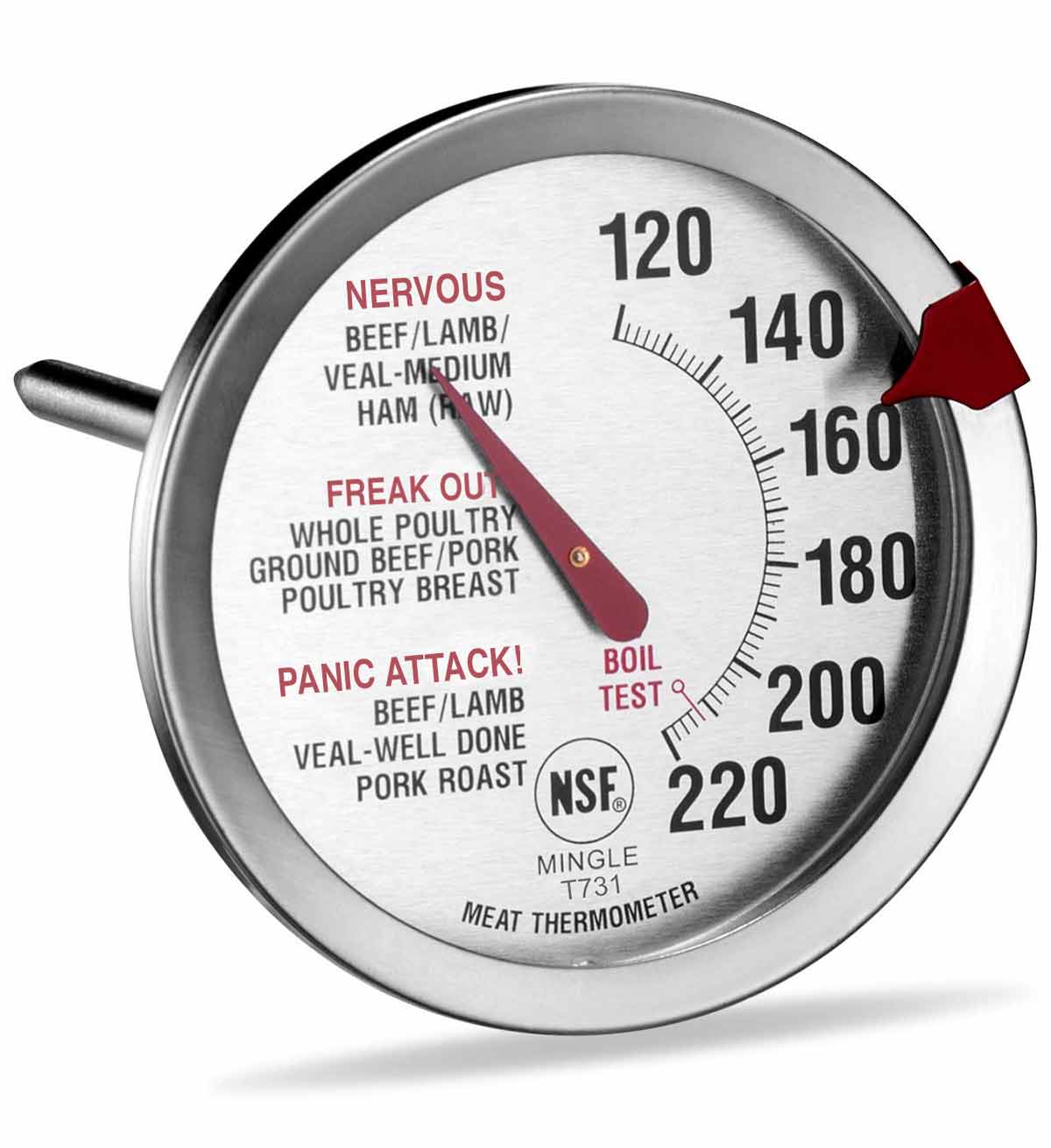
For a long time, every year when it came to the interminable turkey-eating season—November to New Year’s Day—I stood there holding a meat thermometer, hands trembling, face twitching, wondering if this bird would be the one I actually cooked correctly. You see, it seemed no matter what I did, I missed the thickest part of the turkey thigh so spectacularly that, for a while, I left the protein-cooking part of the day in The One’s hands and I took up the immensely less intimidating baking portion of the entertaining program.
But not before one memorable Thanksgiving when I had to call our friend Matty, a former butcher, into the kitchen to salvage the bird, not to mention my flagging self-esteem. (To his great credit, Matty, a man who’ll use anyone’s misfortunes as grist for a few minutes of hilarious stand-up cocktail chatter, never breathed a word of it to anyone. At least, never in my presence.)
What happened was the bird was done an hour before it was supposed to be. Or I thought it was. The guests had already arrived so I made some excuse about setting the timer incorrectly and corralled everyone into the dining room before they even had a chance to enjoy a glass of wine and my homemade bow tie cheese straws. Then, when I carved the breast (thankfully in the kitchen), it was like watching a scene from Saw V–bloody hell.
Apparently, in my haste, I had pushed the digital thermometer into the thickest part of the thigh and right on through the other side and into the bird’s unstuffed cavity. There, the probe became superheated super-fast, not giving the turkey enough time to roast properly. So I shooed everyone back into the living room (except Matty), and we reassembled the bird, stuck it back in a slow oven, then all of us had to make that one bowl of bow tie cheese straws and some roasted Marcona almonds last an hour.
My problem was: How to tell where the thickest part of the thigh was so I could jab a thermometer into it? It seemed like a no-brainer, but without an arthroscopic camera attached at the end of my thermometer’s probe, I was lost. Then I discovered an absolutely surefire way of hitting that sweet spot every time, and my birds have been perfectly cooked ever since.
How to find the thickest part of the turkey thigh
Go ahead and roast your turkey using whichever method suits you. To take its temperature, remove the beast from the oven after 30 minutes and stick the thermometer into the thigh. I use an ovenproof digital thermometer with an alarm so I can monitor the temperature during cooking. Now, jab around in there, you’ll see the temperature rise and fall. Find the coldest spot. That’s where the least amount of heat has penetrated and therefore it’s the thickest section.
Leave the thermometer where it is, slide the bird back in the oven, and wait until the desired temperature is reached. I go with 165°F (72°C). I feel comfortable with that. For the longest time the USDA said 180 to 185°F (82 to 85°C) was the proper thigh temperature, and the result was a bird that was chokingly dry. But in 2006, the department mercifully revised its temperature rules, which means we all have a chance for a better, juicier turkey.
Of course, they still demand a high 160°F (71°C) for medium pork, but I never go above 145°F (63°C), and, hey, I’m still here. But that’s another story best left for a different holiday. Originally published November 9, 2008.












I read your story of your very underdone turkey and the method you learned for proper thermometer placement. I used that method when cooking two turkeys for Thanksgiving this year and they both came out perfectly! Thanks so much for sharing your missteps and what you’ve learned as a result.
You’re welcome, Sharon. We’re so pleased that your turkeys turned out perfectly.
Am I the only one here who never uses a thermometer? I just wiggle the leg and when it feels loose, the turkey is done. It sits for half an hour on the counter while I make gravy and I’ve never had any problem. In the old days, the breast was usually dry but when I learned about the upside-down method I never looked back. I grease the entire bird (I’m a little embarrassed to say I use Pam!) and turn it right-side up 1/2 to 2/3 the way through the cooking time. I always stuff it, too. The hardest part is turning the bird–be careful!
Also, I never use those “enhanced” turkeys, like Butterball. I’m a purist and I want my turkey to taste like turkey, nor do I want to pay a couple of dollars a pound for saltwater. Many stores have a pre-holiday sale of frozen birds for under $1/lb; these are often the only ones I can find that aren’t flavored, unless I want to pay $5/lb for organic farm-raised. Be sure it’s completely thawed before cooking.
I suppose some of what I’m saying is horrifying to many of you, but I’ve been cooking holiday dinners for more than 40 years and I do a pretty good job!
Chris, clearly you’re an intuitive cook. (Forty years can do that to a person!) And your way is perfectly acceptable and correct. But for new cooks, relying on a thermometer is a good place to start so that in 40 years they’re just as talented as you. And nothing you said horrifies. None of us here at LC are food snobs. We’re deliciously ecumenical.